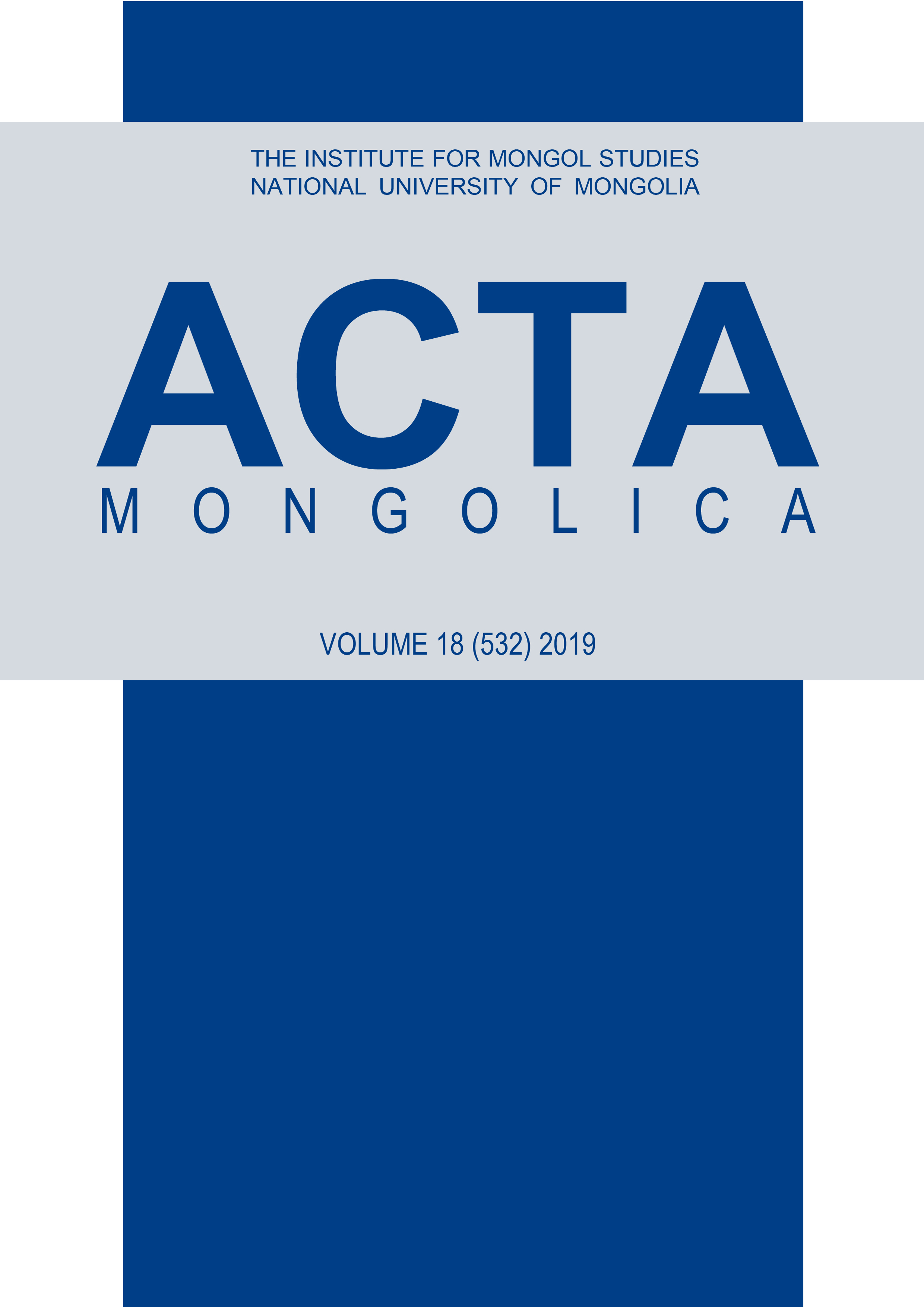Other People’s Prophecies: Subversive Adaptations and Transformations of Śambhala Eschatology
Main Article Content
Abstract
This article aims to demonstrate the processes of adaptation and transformation of the original, Śambhala-related, prophetic narrative in the course of its transmissions from one religious tradition to another (from the Hindu tradition to a later form of Buddhism) and from one culture to another (from India and Tibet to Mongolia). The permutations of an eschatological narrative that will be discussed here reflect not only their historical, social, and doctrinal contexts, but also the undoing of other people’s prophetic discourses through the ongoing and subversive reinterpretation and cultural signification. As we trace the development of the Kalkī-related eschatology from the Mahābhārata to its transformations in other Indic and Mongolian sources, we see that through recontextualization and creative production of new meanings, this eschatological narrative gradually grew from a brief, versified reference to elaborate prophetic accounts written in prose. Like the prophecies of other religious traditions, Śambhala-related prophecies come to us in the form of a revelatory dialogue.
Article Details

This work is licensed under a Creative Commons Attribution-ShareAlike 4.0 International License.
References
Baldanjapova. P. B. and Vanchikovoi, Ts. P. 2012. Galdan. Istoriya Imeneumaya “Erdeniin Erihe.” Ulaanbaatar and Ulan Ude. Monumenta Historica Institutie Historiae Academiae Scientarium Mongoli, Vol. 10, Fasc. 1. Institut Istorii Akameii nauk Mongoliii Institut Mongolosvedeniya, budologii and Tibetologii SO RAN.
Bawden, Charles. 1989. The Modern History of Mongolia. London and New York: Kegan Paul International.
Bělka, Luboš. 2004. Buddhistická Sechatologie: Šambalský mýtus. Brné: Masarykova Unverzita.
Damdinsüren, Ts. 1977. “Ülger domgiin jargalant oron Shambal.” Zentralasiatische Studien, Vol. 11 (1977): 351-87.
Galdan. 2006. Erdeniin Erikh Khemeekh Tüükh Boloi. Ulaanbaatar: Mongolian State University, Center for Mongolian Studies.
Jambadorj. 2006. Bolor Toly. Ulaanbaatar: Mongolian State University, Center for Mongolian Studies.
Minjüür Dechin Shiirev. 2003. Khünii oyunig barigch oron, deed büteeliin Shambalin orond magadtai törökh khiigeed Rigden Dagvin shashintai magad uchrakhin erööl, khuvitai shaviin erdeniin gishgüür khemeekh orshvoi. Translated from Tibetan to Modern Mongolian by Batsanaa, B. Ulaanbaatar: Shambal Niigemleg.
Newman, John, R. 1987. “The Outer Wheel of Time: Vajrayāna Buddhist Cosmology in the Kālacakratantra.” PhD dissertation. University of Wisconsin, Madison.
Palmer, James, 2009. The Bloody White Baron. New York: Basic Books.
Tugan Luvsanchoijinnyam. 2006. Bolorin Toly. Ulaanbaatar: Mongolian State University: School of Mongolian Language Culture.
Vimalaprabhāṭīkā of Kalkī Śrī Puṇḍarīka on Śrī Kālacakratantrarāja by Śrī Mañjuśrīyaśas. Vol, 1. 1986. Critically edited an annotated with notes by Janganatha Upadhyaya. Biblotheca Indo-Tibetica Serises, No. 11. Sarnath, Varanasi: Central Institute of Higher Tibetan Studies.
Vimalaprabhāṭīkā of Kalkin Śrīpuṇḍarīka on Śrīkālacakratantrarāja by Śrīmañjuśrīyaśas. Vol, 3. 1994. Edited by Vrajavallabh Dwivedi and S. S. Bahulkar. Rare Buddhist Text Series, vol. 13. Sarnath, Varanasi: Cenrtral Institute of Higher Tibetan Studies.
Volkov, Sergey. 2008. Tibet na Krayshe Mira: V Poiskah legendarnoi Shambaly Sredi peskov i mifov Tsentralynoi Azii Zadatki imperii Cingishana. Moskva: Izdatelystvo Hranitely.
Wallace, A. Vesna. 2001. The Inner Kālacakratantra: A Buddhist View of the Individual. New York: Oxford University Press.
-----. 2004. The Kālacakratantra: The Chapter on the Individual, together with the Vimalaprabhā. (Translated from Sanskrit, Tibetan, and Mongolian). New York: Columbia University’s Center for Buddhist Studies and Columbia University Press.
-----. 2016. “Mongolian Adaptations of Utopian Alternatives in the Legends of Śambhala and Their Eschatological Narratives.
-----. 2019. “Śambhala as a Pure Land.” In Pure Lands in Asian Texts and Contexts. Edited by Georgios T. Halkias and Richard K. Payne. Honolulu: University of Hawai’i Press. Znamenski, Andrei. 2011. Red Shambhala: Magic, Prophecy, and Geopolitics in the
Heart of Asia. Wheaton, Illinois and Chennai, India: Theosophical Publishing House.

